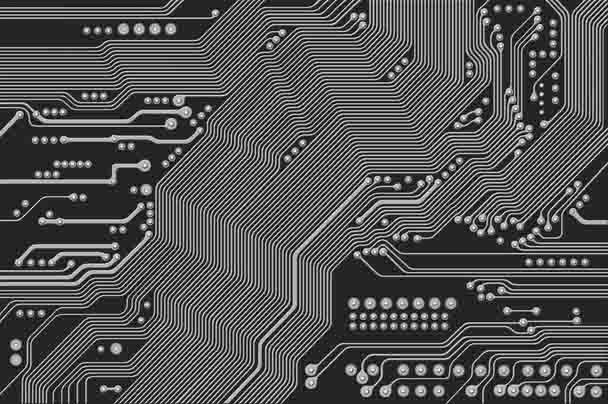What is a 4 layer PCB?
Home < 4 layer pcb < What is a 4 layer PCB?
2024-03-07 17:49:24 4 layer pcb 19 Viewed
SummaryWhat is a 4 layer PCB?A 4-layerPCBis a common type of printed circuit board, which is composed of four layers of substrate and an inner layer of copper foil in the middle, each inner layer of copper foil is separated by an insulating layer, and the outer layer is the top and bottom coppe...
What is a 4 layer PCB?
A 4-layer PCB is a common type of printed circuit board, which is composed of four layers of substrate and an inner layer of copper foil in the middle, each inner layer of copper foil is separated by an insulating layer, and the outer layer is the top and bottom copper foil. This structure allows circuit designers to lay out more circuit elements and connections in a relatively small space, making 4-layer PCBS very useful in complex circuit designs.
4 Layer PCB Thickness
4 layer PCB thickness has a certain variation, usually determined by the designer according to the needs of the product. However, in general, the common standard thickness includes 1.6mm, 1.2mm, 1.0mm, etc., and this thickness includes all layers of the conductive layer and the insulating layer.
4 Layer PCB Design Guidelines
The design of 4-layer PCB requires certain planning and skills, the following content is for reference only:
1. Hierarchical planning: Define the functions of each layer, such as the top and bottom layers for component layout and signal transmission, and the inner layer for power supply and ground plane. Clear hierarchical planning facilitates more efficient layout and wiring.
2. Ground layer planning: Keep one or more inner layers as ground layers to reduce electromagnetic interference and improve signal integrity. Connect all ground to ground plane to minimize current return path.
3. Power plane planning: If needed, use the inner layer as the power plane. This helps provide a stable power supply and reduces interference between the signal and the power supply.
4. Signal layer layout: key signal lines such as high-speed signals, clock lines and sensitive signals are placed to reduce the signal path and reduce crosstalk.
5. Differential pairing: for high-speed differential signals, ensure the correct pairing and matching length to maintain signal integrity.
6. Make full use of the inner layer: the use of the inner layer space, through the inner layer for multi-layer wiring, reduce the complexity of wiring, improve the design density.
7. Insulation layer planning: ensure that the insulation layer is stacked correctly to prevent short circuit. The choice and layout of the insulation layer has a significant impact on electrical characteristics and EMI (electromagnetic interference).
8. Impedance matching: for high-frequency signals, ensure that the differential impedance and single-ended impedance match to maintain signal integrity.
9. Thermal management: Consider heat dissipation, especially for components with higher power consumption. Leave enough space in the layout to accommodate the radiator and ensure good ventilation.
10. Pin and Connector Layout: Carefully arrange the placement of pins and connectors to ensure easy connection and maintenance. Avoid narrow areas to facilitate welding.
11. Signal Integrity Analysis: Use tools to perform signal integrity analysis to detect and correct potential electrical problems.
12. Package selection: Select the appropriate package to ensure that it meets the design requirements and is easy to fabricate and weld.
4 Layer PCB Layout Pay Attention
1. Ensure a good connection between the signal layer and the ground/power plane to reduce signal noise and interference.
2. Avoid cross-coupling between the signal layer and the ground/power plane, which can be achieved by proper layout and hierarchical arrangement.
3. Rationally plan the position of the components for effective signal routing and ensure that the routing path is as short as possible and the signal loss is minimized.
4. Use appropriate pin distribution and connection to ensure the stability and reliability of signal transmission.
4 Layer PCB Stackup Thickness
4 layer PCB stackup thickness standard is 1.6mm, including two layers of copper foil, two layers of insulation and a core layer. Among them, the thickness of the copper foil can be selected according to the need, and the common copper foil thickness is 1 ounce (35µm) and 0.5 ounce (17.5µm). The thickness of the insulation layer is usually 0.2mm, while the thickness of the core layer is usually 1.2mm, and the actual stack thickness needs to be adjusted according to the specific design requirements.
4 Layer PCB Standard Stackup
1. Top (signal layer) - Inner layer 2 (formation) - Inner layer 3 (power layer) - Bottom (signal layer)
This is the standard four-layer stacking solution common in the industry; the top and bottom are signal layers, the inner layer 2 is the stratum, and the inner layer 3 is the power layer. This stacked structure has a good effect on EMI shielding, and can effectively reduce the signal loop area and path inductance.
2. Top (signal layer) - inner layer 2 (power layer) - inner layer 3 (stratum) - bottom (signal layer)
This stacking structure is similar to the first, except that the strata and power layer are interchangeable, and this structure can provide better signal integrity in some specific situations.
Different stack structures apply to different design scenarios and performance requirements.
2 Layer vs 4 Layer PCB Cost
The 2 layer vs 4 layer PCB cost difference depends on a number of factors, including the complexity of the design, manufacturing process, material choice, and market and regional differences. Here are some general comparative factors:
1. Number of layers: The 4-layer PCB has more layers than the 2-layer PCB, so the cost of the plate is higher.
2. Design complexity: 4-layer PCBS are usually used for more complex circuit designs that require more design time and resources.
3. Materials: 4-layer PCBS may require the use of higher performance materials to meet special electrical performance and signal integrity requirements.
4. Manufacturing process: Manufacturing 4-layer PCB requires advanced technology and equipment, thus increasing manufacturing costs.
5. Market and region: Cost differences may be affected by market and regional factors.
Previous:没有了!
Next:没有了!
4 layer pcb Description
What is a 4 layer PCB? Related Articles
What is a 4 layer PCB? Random Article
4 layer pcb News
4 layer pcb Tags
You May Also Like
Huihe PCB Site Information
- Article Statistics:191 Articles

